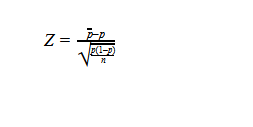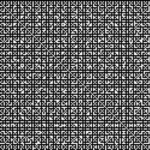Let’s suppose that after a specific fix the failure rate of the program has been reduced – how can we be sure with a high confidence this fix indeed reduces the failure rate and not the result of a random fluctuation?
This question is equivalent to very famous statistics problem – tossing of coin. If we toss a coin 100 times and get the head 63 times. Can we accept with a high confidence that the probability of getting the head is above 0.5?
Let’s suppose you test a SW program and observe that it sometime is stuck, say 10 of 100 runs the program is stuck. A SW engineer which is responsible for the program adds some fix and now the program is stuck in 5 runs of 100 (i.e. the observed failure rate is reduced twice from 0.1 to 0.05). Can we conclude that this fix indeed improves a reliability of the program and we are in the right way to make the program ‘stuck-free’ (completely reliable)?
In language of statistics we can re-phrase the above question as follows:
Can we with confidence level say 98% accept that the failure rate after the fix is below p=0.1?
We have two hypotheses:
Null hypothesis H0: p=0.1
Alternative hypothesis HA: p<0.1
The observed failure rate after the fix is p=0.05, let’s compute the value

Where n is the number of runs, in our case n=100 and the null-hypothesis p=0.1.
We reject the null hypothesis (or in other words we accept the alternative hypothesis that the fix helps) if Z <-2.05 (since the left-tailed Z for α=0.02 is -2.05 or the confidence level is 98%).
In our case with p=0.05 and n=100 we have Z=-1.6. Hence, we can’t infer with the confidence above 98% that the fix indeed helps.
Let’s suppose that the SW engineer makes another fix and we obtained better results: 3 failures of 100 (i.e. is p=0.03). In such case Z = -2.3 < -2.05 and hence we can infer with the confidence above 98% that the last fix indeed reduces the failure rate.
2) A program is tested 7 times and after a number of hours it’s crashed. An engineer added some changes in the program and the number of hours before crashes increased (from 7 tests 6 times crashes were observed lately than in the original version). Can we accept that the changes in the program indeed helped?
| Tests | 1 | 2 | 3 | 4 | 5 | 6 | 7 |
| Before change
working in hours until crashed |
15 | 23 | 32 | 29 | 28 | 24 | 13 |
| After change |
22
|
26 | 38 | 33 | 30 | 28 | 10 |
The null hypothesis: the modification in the code does not impact. Under the null hypothesis what’s the probability that 6 of 7 tests show longer running?
The probability (P-value) of getting such result or better: 7/128 + 1/128 = 6.25% . We can’t reject the null hypothesis with 5% confidence.

23+ years’ programming and theoretical experience in the computer science fields such as video compression, media streaming and artificial intelligence (co-author of several papers and patents).
the author is looking for new job, my resume







I dugg some of you post as I cerebrated they were very helpful extremely helpful
You have brought up a very good details , thankyou for the post.
I was more than happy to seek out this internet-site.I wanted to thanks to your time for this wonderful learn!! I positively enjoying each little little bit of it and I’ve you bookmarked to check out new stuff you weblog post.
Woah! I’m really digging the template/theme of this site. It’s simple, yet effective. A lot of times it’s very difficult to get that “perfect balance” between user friendliness and appearance. I must say you’ve done a fantastic job with this. In addition, the blog loads extremely quick for me on Safari. Superb Blog!
I loved as much as you’ll receive carried out right here. The sketch is tasteful, your authored subject matter stylish. nonetheless, you command get bought an edginess over that you wish be delivering the following. unwell unquestionably come further formerly again since exactly the same nearly very often inside case you shield this hike.
Thanks for ones marvelous posting! I certainly enjoyed reading it, you might be a great author.I will be sure to bookmark your blog and will eventually come back from now on. I want to encourage continue your great posts, have a nice weekend!
You are my intake, I own few blogs and very sporadically run out from to brand.
Hiya, I am really glad I’ve found this information. Today bloggers publish only about gossips and internet and this is really frustrating. A good web site with interesting content, that’s what I need. Thanks for keeping this site, I’ll be visiting it. Do you do newsletters? Cant find it.
Newsletter button is located at the main page
Hello videonerd.website owner, Thanks for sharing your thoughts!
Dear videonerd.website admin, Your posts are always well-cited and reliable.